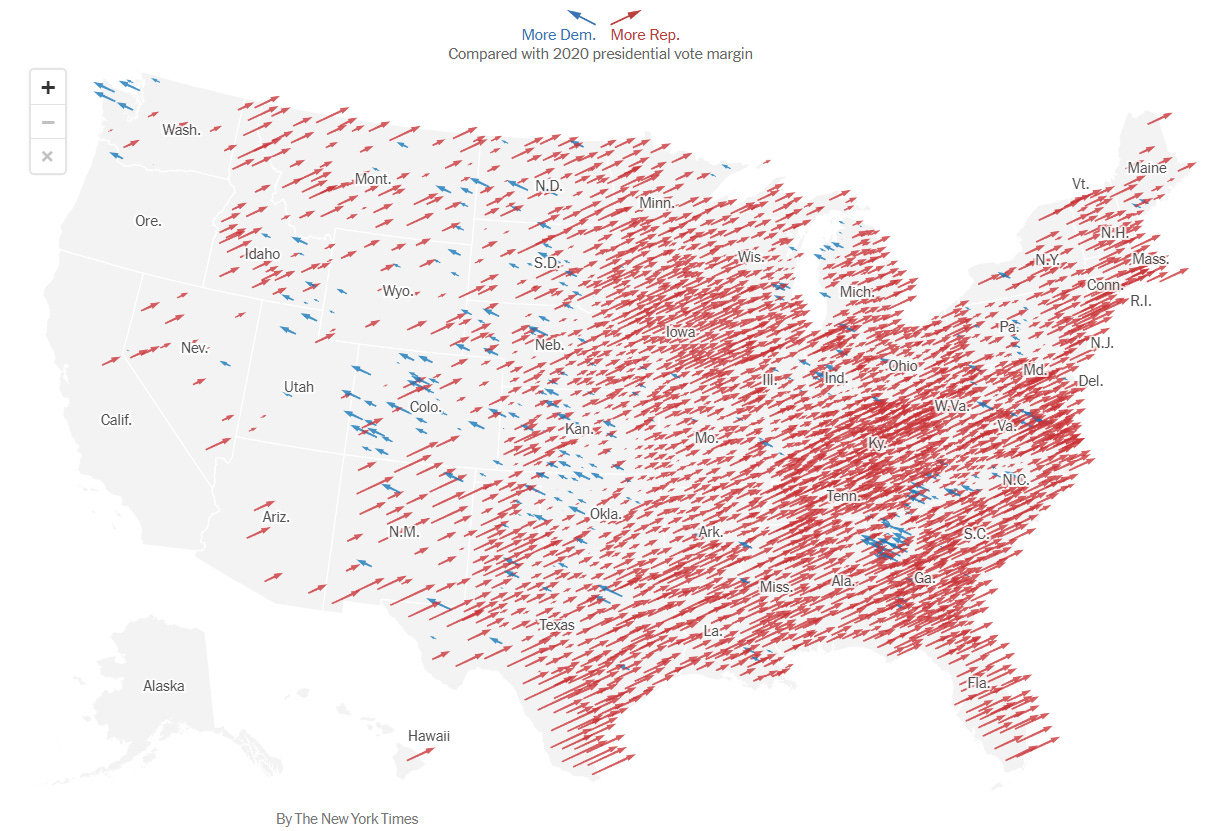American Viewer: Everything You Think About Politics, Religion & Money is Wrong
Topics deeply misunderstood by many helped Trump win. My data can help Hollywood programming align with where the audience actually is
Editor’s note: This is the latest in our ongoing series revisiting potential knowledge gaps in Hollywood around the American audience and how best to program to a broader base. Our earlier pieces addressed bicultural Latinos, the heartland, cross-generational viewers and insights about age, race and gender.
As Entertainment Strategy Guy suggests below, it may not be couth to “discuss politics, religion or money at a dinner party,” but when it comes to thinking about the people you’re trying to persuade to watch your movies and TV shows, we have to.
The day after the election, the New York Times reported that Donald Trump’s vote margin improved in 2,367 counties compared with 2020 and decreased in only 240 counties.

In addition, the Associated Press reported that Trump won more support from Catholic voters than he did in 2020, going from 50 percent to 54 percent, with a notable shift in the swing state of North Carolina, where Trump defeated Vice President Kamala Harris by 183,000 votes. He also garnered more voters who make less than $100,000 annually and made meaningful advances among voters without a college education.
In this deep dive into the American audience through the lens of religious and political affiliation, education and income, ESG uncovers data and insights relating to all of these groups. As he writes, “We often think we know what America looks like, but our perceptions often don’t match the data.” I assume you, after you read this piece, those perceptions will be reset.
Herewith, the second of ESG’s deep dives into the American Audience, presented in an encore run in light of all this new information from the 2024 election. The original below first appeared Sept. 7, 2022:
One of my favorite political reads of the last year or so was journalist Matthew Yglesias’ quest to help politicians understand that their voters aren’t on Twitter. Specifically, he wrote an article called, “The median voter is a 50-something white person who didn’t go to college.”
I liked it so much that this series is a bit of an homage — but for people who make TV and film. We often think we know what America looks like, but our perceptions often don’t match the data. This gets especially true as things get complicated. Or controversial. What we want to believe is not always a reflection of reality.
Never discuss politics, religion or money at a dinner party? Well, that’s exactly what we’re doing today — a sober look at what the data tells us about Americans on the most third-rail issues.
(Tomorrow’s column will be a deep dive into how Americans watch TV.)
Today we’ll cover:
What Americans actually make (and how many likely can’t afford streaming services)
Our nation’s enduring religiosity
Americans’ education level and what it means for programming
Americans’ actual interest in politics — and how few watch political programming
Now let’s get into the juicy stuff . . .
This column is for paid subscribers only. Interested in a group sub for your team or company? Click here.
For full access and to continue reading all Ankler content, paid subscribers can click here.




